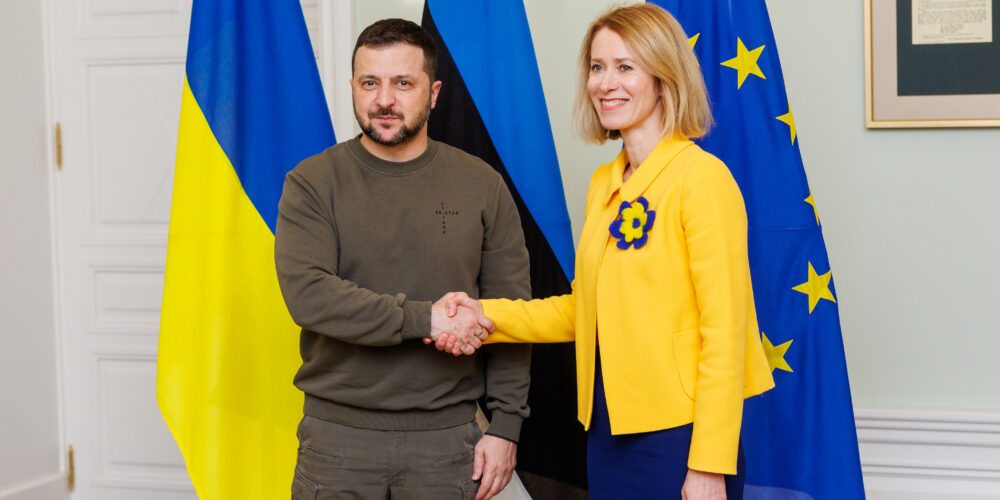April 17, 2024

Estonia achieved full independence in 1991, when a referendum declared the termination of the illegal Soviet occupation. In subsequent years, this country of only around 1.3 million people has made incredible headway in its digital transformation, cultivating a pro-innovation environment that has resulted in the output of ten $1 billion tech companies. This includes unicorns like the videoconferencing company Skype and the ride-sharing Uber-competitor Bolt. There is also ID.me, a digital ID company with an Estonian Chief Technology Officer which was recently valued at between $1.4 and $1.6 billion. Estonia is a trailblazer within the EU, with the World Economic Forum labelling it “the most entrepreneurial country in Europe”, and its path to a digital world establishes guidelines for how the rest of Europe should embrace technological innovation.
From Soviet Communism to Pro-Free Market
Following independence, Estonian resources were largely depleted, leaving the country with the big task of kickstarting its economy. In fact, by 1993, inflation was at 90 percent. To tackle this, it took the leap into capitalism by adopting pro-free market policies to liberalise trade, let natural market competition dictate interest rates, and open itself to the Western world. Mort Laar, Estonia’s Prime Minister from 1992 to 1994 and again from 1999 to 2002, led this reform, bringing a fast reformer view welcomed by Estonians dealing with the fallout of the slow-moving false promise of the Soviets. Laar was later recorded attributing the drive of this quick start “shock therapy” of the Estonian economy to Margaret Thatcher’s own “just do it” attitude, marking the first steps towards its digital renaissance. Taking this approach meant that as early as 1995, inflation dropped by 68 percent to 29 percent, and 10,000 new companies had been established, introducing the wave of start-up culture that Estonians are familiar with today.
Building From The Ground Up
This quick reform attitude, coupled with a largely blank canvas to work from, presented a unique opportunity to drive tech growth, spearheading Estonia’s assertion of freedom and pursuit of digital rights. This began with the first draft of the Principles of Estonian Information Policy in 1994, allowing for the allocation of a percentage of GDP specifically for information technology. This policy was subsequently adopted by Parliament in 1998 and led to the transformation of public services to increase efficiency. As public services became more accessible, it laid the groundwork for the introduction of other services, such as the transition to e-banking that ultimately led to the infamous e-ID, a digital ID that creates seamless digital experiences for Estonian citizens. The e-ID is issued upon birth and reduces the number of identity checks required to access private and public resources.
As of February 2024, the government has issued approximately 1.4 million ID cards, in part because the push for digitalisation focused more on the collective advantages it would bring rather than the associative privacy concerns of sharing personal data with government. Even more so, this latter point was later addressed during the development process of the digital ID, opting for a forwarding thinking decentralised system, and opportunities for individuals to view who has accessed their data, and why.
The success of the e-ID shows why ranking pro-collectivism over pro-individualism leads to better long-term societal well-being. One study published by the National Bureau of Economic Research found that Europe’s aggressive privacy agenda is killing app innovation, showing a correlation between the introduction of the General Data Protection Regulation (GDPR) in 2018 and the exit of around one-third of available apps from the EU. The study concluded that factors reducing entry costs into Europe deliver large welfare benefits. Estonia’s free market approach from the early 90s clearly demonstrates that it is possible to better balance the risks and opportunity from new technology.
Similarly, Estonia is known for X-Road and the derived X-tee instance, a distributed data exchange layer acting as the backbone of Estonia’s digital infrastructure that assists with national integration and reduces data leaks from unsecured databases. X-Road is a free and open-source technology that facilitates data transfers between the public and private sector. It streamlines data exchange processes, enhances security, and facilitates interoperability, enabling organisations to derive greater value from their data assets. Because of X-Road, 99 percent of public services are accessible online 24/7. Estonia first began development of its X-Road framework in 2001. By contrast, the new European Data Act, which seeks to achieve a similar goal as X-Road of data accessibility, interoperability, and data-driven innovation, was introduced in 2022, showing how future-forward Estonia’s policymakers were to bet on open data exchange.
An Economy Fit For The Digital Age
At the start of its digital journey, Estonia had a GDP per capita of $3,134. By 2022, it had a GDP per capita of $28,247. This represents an over 800 percent increase in under 30 years. Of course, this figure comes with certain caveats, including Estonia’s much smaller starting point compared to other EU countries, and the fact that Estonia’s digital transformation is not entirely responsible for its economic growth. It does, however, make a strong case for how embracing technology can build an economy fit for the digital age.
Estonia’s success comes from a combination of forward thinkers, open-minded citizenry, and proactively embracing the future whilst still paying attention to present-day concerns. It is why Estonia has garnered the title of “the most advanced digital society in the world.” The current EU mandate is poised to disrupt its wider ambitions of a digital Europe, with recent regulations including the Artificial Intelligence Act, the Digital Markets Act, and the Digital Services Act curtailing technological innovation in the same way GDPR did, through an increasingly complex regulatory framework creating high barriers for entry. European policymakers would do well to embrace the same ideas underpinning Estonia’s own digital transformation, facilitating global innovation to support its citizens, and making policy that treats technology as an enabler, not an inhibitor.
Photo by Nikola Johnny Mirkovic on Unsplash.
Editor’s Note: We updated this article on April 25, 2024 to include additional information about X-Road and X-tee.
Resorce: Center of data of information













